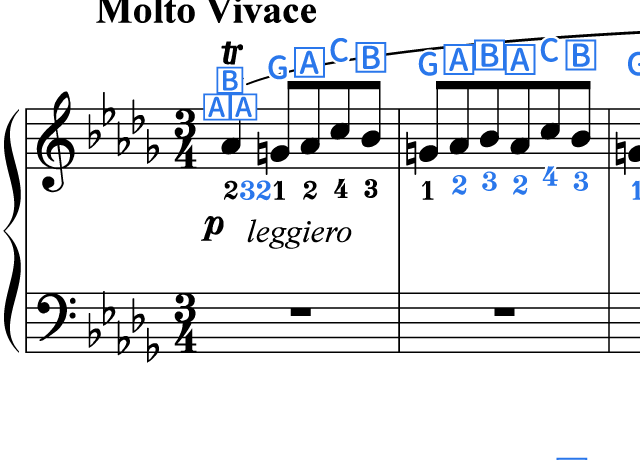How To Play (How To Practice)
1. Level : 4(Normal 2)
This piece has briliant melody and no octaves so familiar to many children. A continuity of fast passages may be difficult for adult beginners. That's why the level is 4, but even a child can play this if he is good at playing fast passages.
2. Beginning (A~)
1. Lightly


Play the melody in non-legato and lightly without pressing the keys down too much.
1. Put Your Hands Forward Slightly
When you touch the many black keys, put your hands forward slightly and you can play easier.
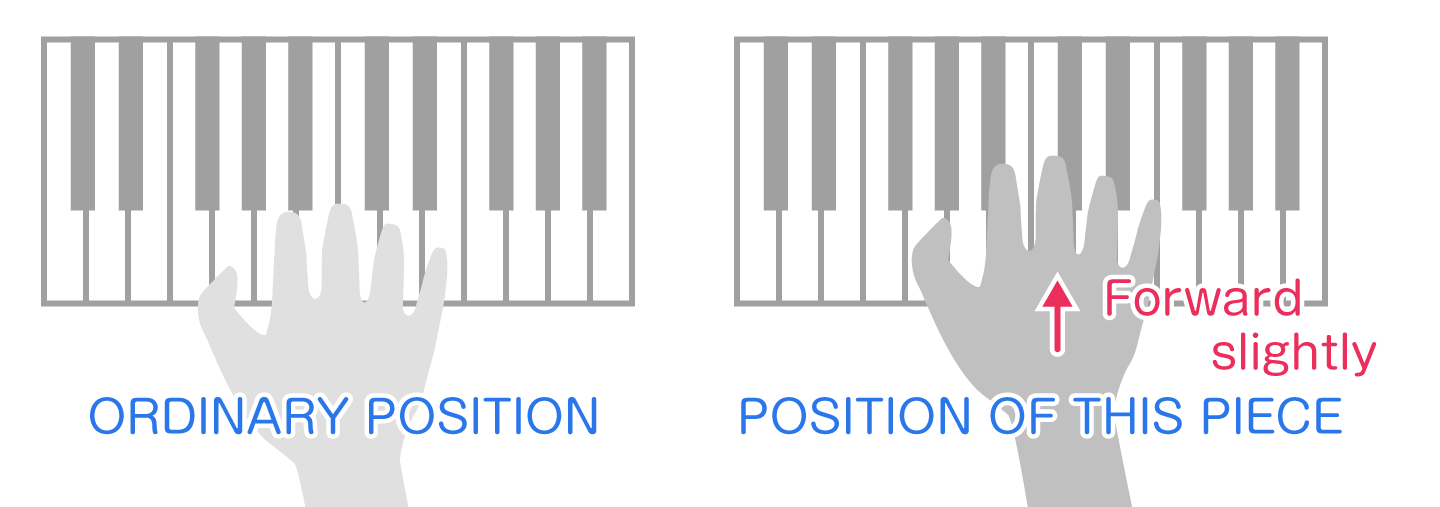
2. Relax Your Wrist
Though eighths continue, don't strain and relax your wrist.
On dotted quarter notes, you should relax your wrist consciously.

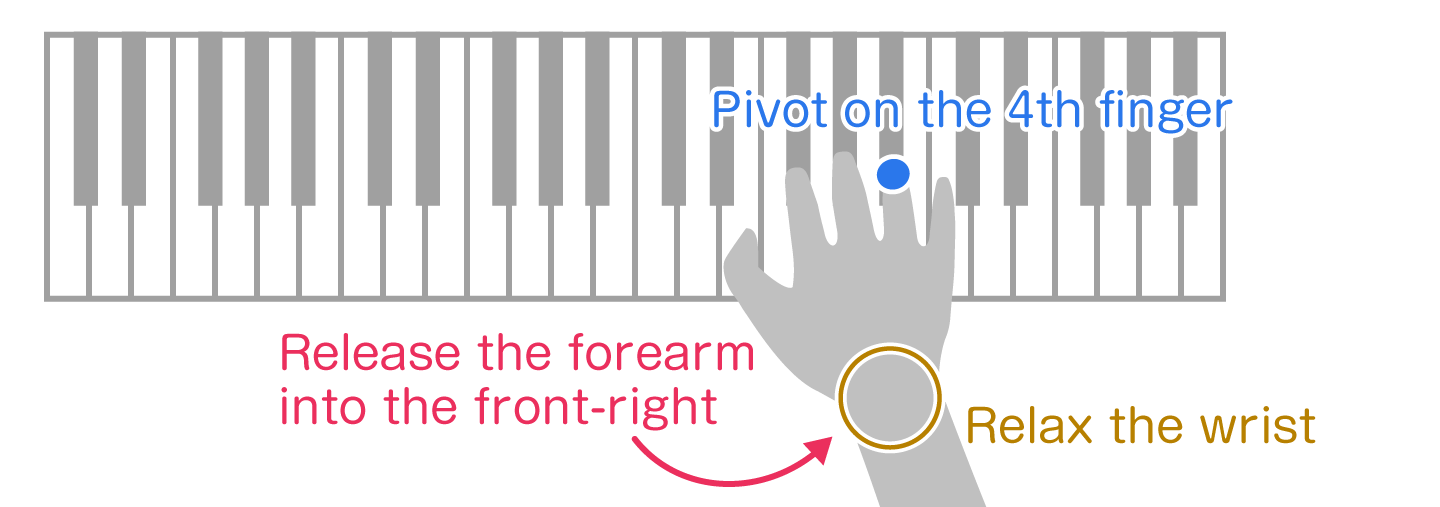
Releasing your forearm into the front-right (or up) as shown in the figure above, relax your wrist consciously.
You need some more "muscle of the base of fingers" to play faster.
So try the rhythm practice and staccato practice below to develop your finger muscle.

Staccato practice also improves non-legato playing.
In rhythm practice, it is important to practice correctly so you should start with a simple practice as above.
2. Tips For Playing Trills Lightly
Play the trill lightly and press the keys shallowly.
Lifting up the finger after touching the key uses muscle of the finger to some extent. So if you press the key deeply, you can't lift it up by playing the same note again. That's why you should press the keys shallowly in trill.
1. Trill In Bar 10
The trill (E♭FE♭) in the bar 10 is difficult.
So you can decreace the note and play (FE♭) like a grace note.
Important things are to relax the hand and to play lightly so please choose the way of trill depending on the situation.

2. Lift Your Wrist Up
Trills can be easier by lifting up your wrist a little bit.
To lift up the wrist makes lifting up the fingers easier.
Lifting the fingers up, you can easily move them horizontally (front and back), not vertically (up and down).

Thereby, you are going to press keys shallowly and the keys can be going to risen up faster.
3. Trill In Bar 12: Energy of Spring
This is the tip for the trill in the bar 12. At the beginning of the trill, you can lift up your index finger higher.
after lifting it up higher consciously, let it fall down like a bouncyball.
This is not suitable for long trills but effective for the short trill like this.
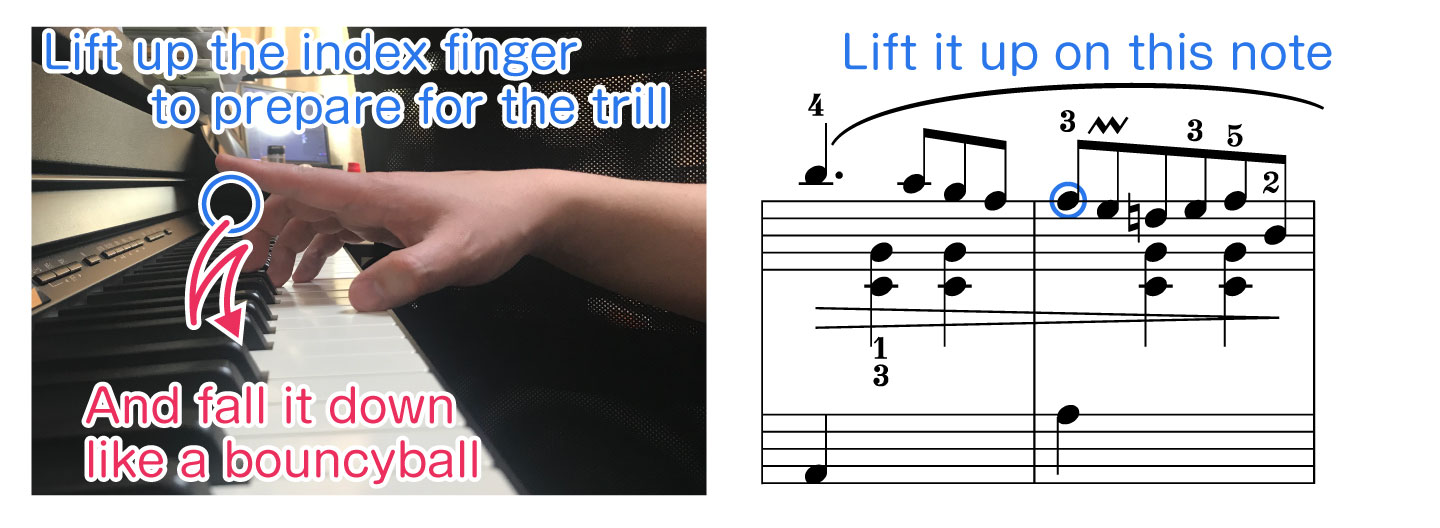
4. Practice With the Minimum Phrase
You must play trills with the hand relaxed.
If you can't feel relaxed, practice with minimum phrase and lengthen:
just the trill
just the one bar
the whole phrase.
And practice paying attention to where you can't help straining.

When you practice the whole phrase, you should practice it with the trill and without the trill alternately to keep the correct tempo.
3. A Circle Movement Over 3 Beats By Left Hand
On the first beat, let your left hand fall down.
Through the second and the third beat, lift up your wrist with bouncy rhythm.
And on the next first beat, let it fall down again.
Like a circle; the very word which express movement of the left hand appropriately, move your left hand and accent on the first beat.
That's the basis of the waltz.

Movements On Every Beat In Bar 20
In bar 20, the bass moves on the 3rd beat and it is different than before. So play in the respective movements on every beat and decrease the tempo a little bit.

3. From Trio (B-)
1. The practice Of Quadruplets 1
This practice's aim is to understand change of rhythm correctly.


1. Speak And Recognize The Rhythm
Using a metronome and making it click every 1 bar, try reading aloud "E-D,CEDB,A-E (Mi-Re,DoMiReSi,La-Mi)".
This practice's aim is to understand rhythms of 2 kinds of tuplet correctly.
2. Learn with your voice and fingers
After understanding the rhythm, master it with your fingers.
Using a metronome and read aloud and try adding the right hand.
When you master it, you can practice it with only right hand without the voice.
2. The practice Of Quadruplets 2
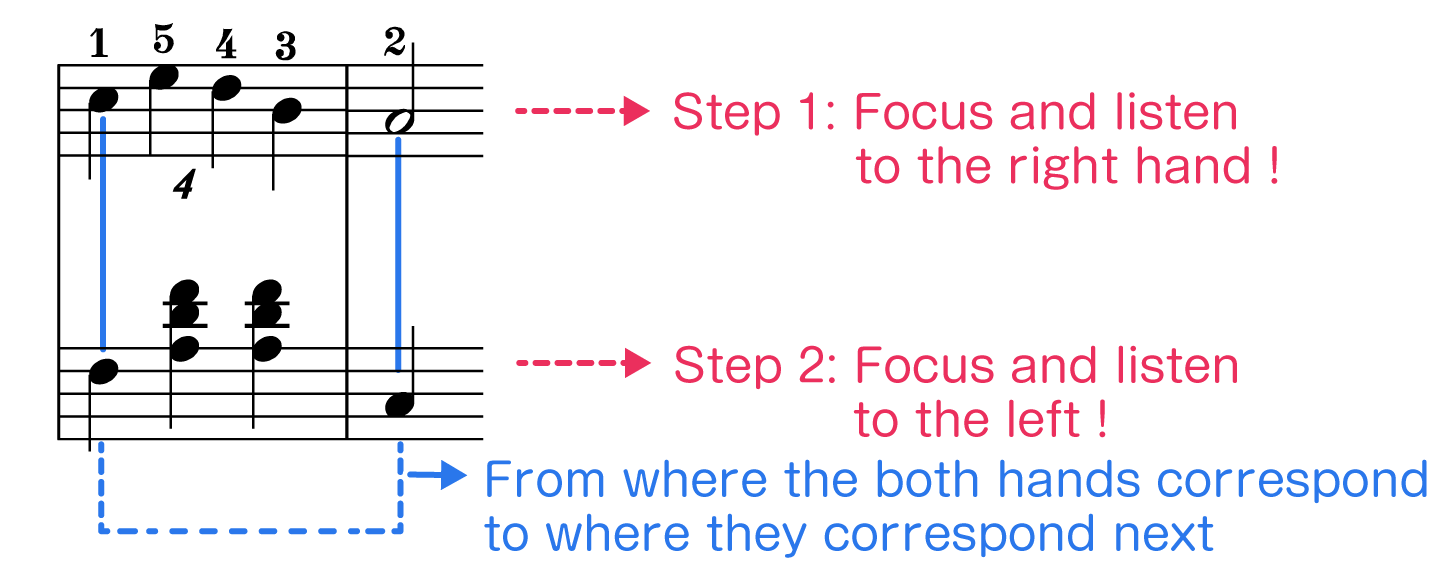
This practice requires you to be able to play fast to some extent with each hand.
And practice with both hands from a point where the timing of the melody and the accompaniment corresponds to the next point.
(In this practice, the slower you play, the harder this phrase is. So you need to be able to play "fast to some extent".)
And listen to each part with a focus on either. First, listen to whether the melody is quadruplet correctly and next listen to whether the accompaniment is triplet correctly. Practice in this way until you can play with both hands in correct tempo.
This practice improves your ear and makes you listen to the rhythms of each part at the same time.
3. Trill In Trio
the trill of eighth note in the beginning requires some speed but in trio, the trill of quater in Trio requires it not too much.
(Instead, be careful not to accent.)
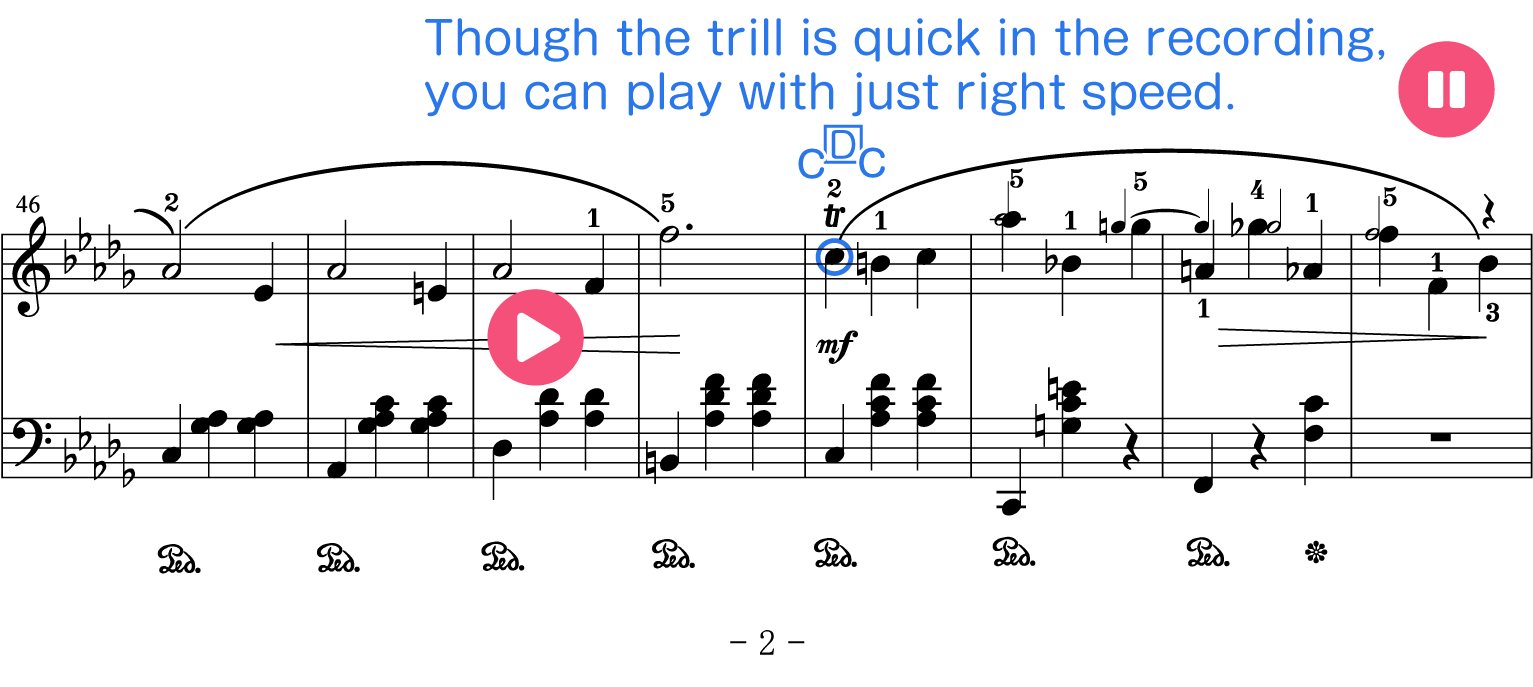
4. Very Soft Grace Notes In Trio
In the latter half of Trio, play lightly.
So play the grace notes softly and lightly.
How to play the grace notes...
- Just touch the key, don't press it almost.
- If you feel it hard, try to recognize playing it at almost the same time as the half note.

Turn your wrist slightly and play this phrase like turning a knob.
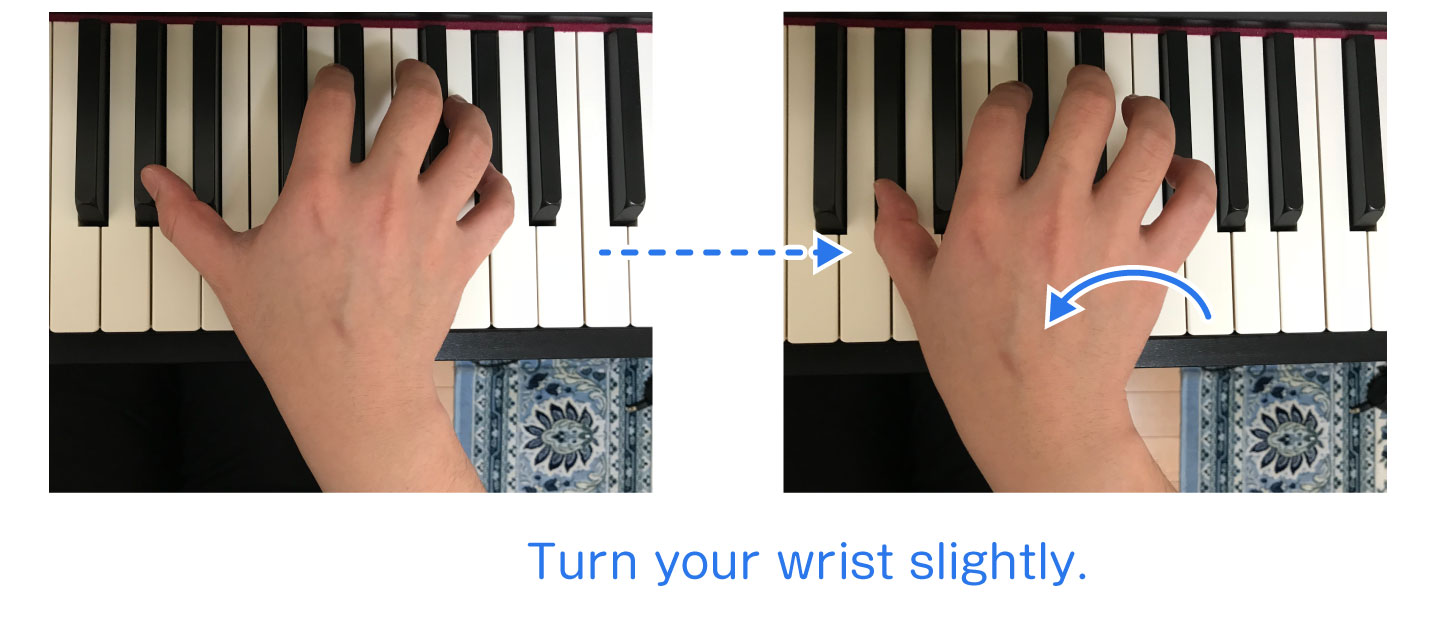
5. How To Play Long Trill

Lift up your wrist and you'll find the trill easier.
In this case, the fingering is (2323) or (2424).
By the former, you can use the 2 fingers which are the deftest,
by the latter, 2 fingers which have similar length.
In addition to this, you can choose (1313) which is the fingering by turning the wrist .
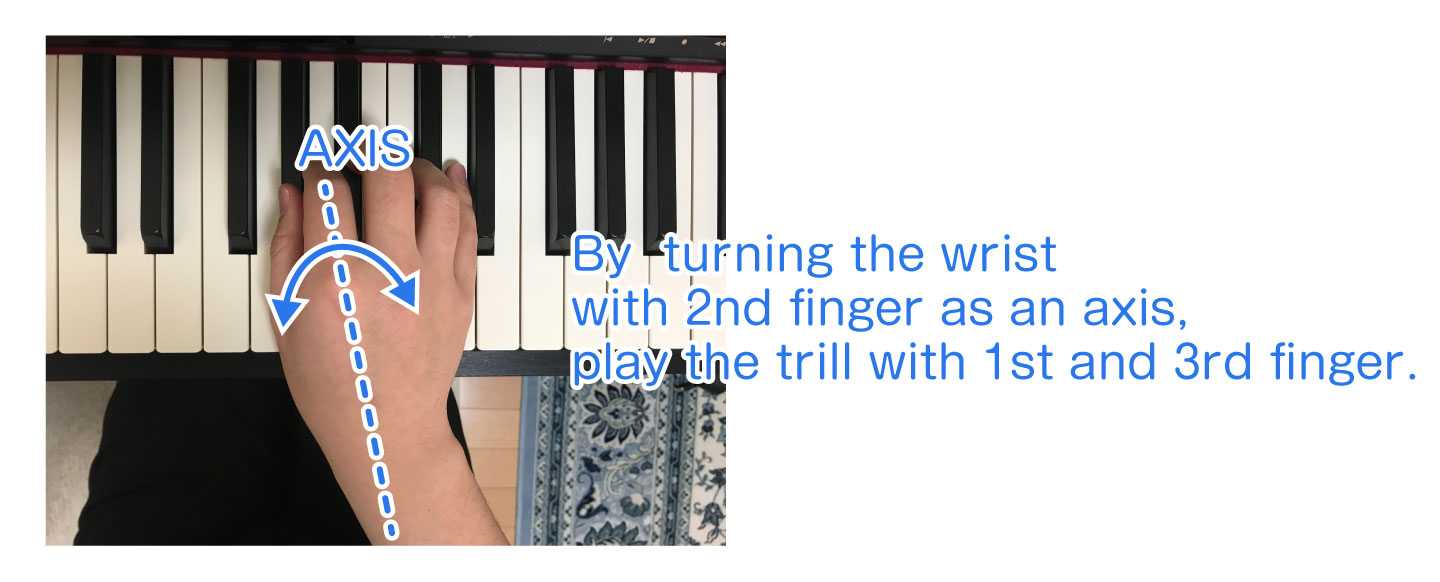
There are some choises of fingering of trill.
Each of them has the cirtain reason so try some fingerings and choose one.
6. Scale In The End
To keep the tempo, feel the beat and count it silently. And you can recognize the point where the scale corresponds with the left hand.

Feel the beat "silently", don't accent the notes in the scale.

